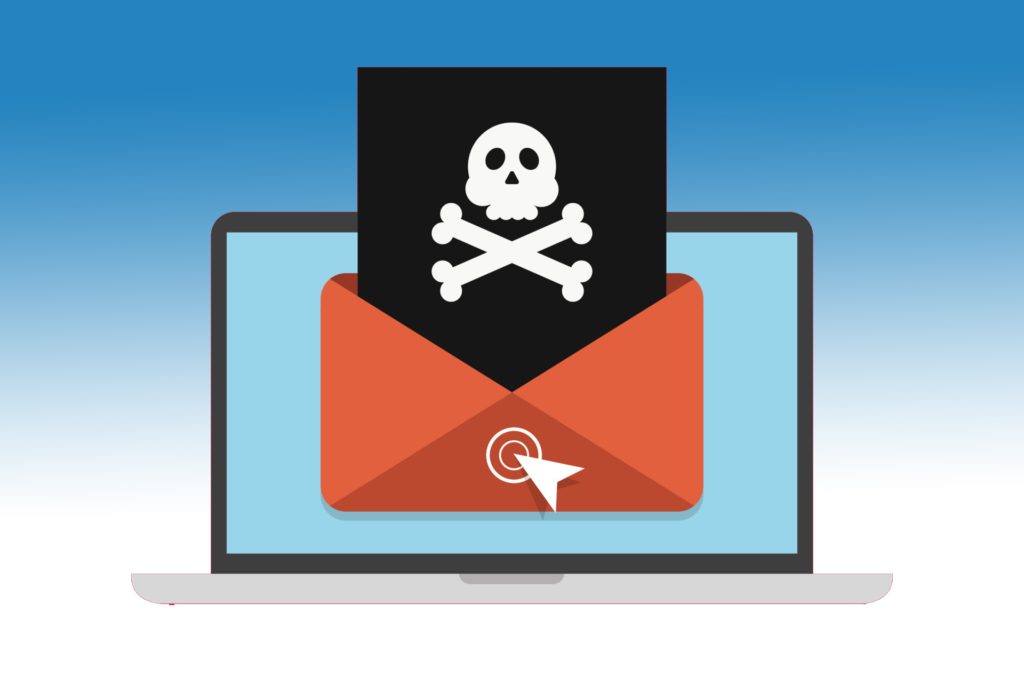7 Most Commons Amazon Terms & Policies Sellers Violate
Your sales are picking up and supply orders are looking good, which means it’s even more important to know what Amazon Terms & Policies violations are. Once you’re on a roll, the last thing you want is a dent in your sales.
All Amazon sellers are required to adhere to the Seller Code of Conduct and other Policies, and must know how to deal with a violation. It’s something you can easily avoid in many cases.

Policy Violation vs. Warning
Before moving further, it should be noted that a term and/or policy violation is not the same as a warning.
Policy warnings, displayed as red ‘danger’ signs, remain in your dashboard for up to 180 days, but don’t affect your selling activities after you stop doing what triggered the warning in the first place.
A policy violation will stay in your dashboard until to prove that you have resolved the issue which prompted the violation and that you will not repeat the issue or activity that triggered it – this requires successfully submitting actionable Plans of Action (POAs) through Amazon policy violation appeal letters.
Now then, let’s talk about some common term/policy violations:
Common Terms & Policies Violations on Amazon
1. Inauthentic items
Amazon’s bots are really good at picking up specific words. These can be from buyer feedback or messages, keywords, listing descriptions, etc. If any of these words hint toward an anti-counterfeiting policy violation or in plain words, one which revolves around inauthentic items, your account will be flagged.
It’s not exactly uncommon for sellers to make false or generally shoddy claims. However, even if a competitor makes false claim against your product, it may lead to a violation involving inauthentic items. If you ever get flagged for this violation but don’t suspect any foul play, inspect your inventory and then write to Amazon. A POA may not be needed but you may need to do this at the minimum:
- Send Amazon itemised invoices with the appropriate letterhead, contact information, and date range.
- Provide evidence that your supplier has been authorised to sell.
- Get in touch with your authorised distributor and ask them to send a ‘vote of confidence’ for you.
2. Product safety
As you may already know, Amazon has a dedicated Product Safety Team which looks into incidents and/or complaints around safety. Naturally, the safety standards set by Amazon change every now and then, meaning the team is expected to keep pace with new requirements all the time.
Safety violation claims typically come in stages or waves and tend to be more common with FBA products – these items have very strict rules around expiration dates, in addition to labelling, prepping and storing.
If you get slammed with this violation, then you’ll need to submit a policy violation appeal letter to Amazon. However, if you don’t have all the required documents, you will not be able to submit it. Any seller wanting to appeal a suspension pertaining to product safety violation should do the following:
- Dispose the said items
- Change storage conditions
- Move them to a market or country that’s more lenient or has more ‘lax’ product safety laws
- Perform periodic testing through a certified laboratory
- Provide setup instructions for using the product
- Obtain and keep Material Safety Data Sheet (MSDS) documents
- Obtain liability insurance
- Acquire ISO accreditation (ISO17025 e.g. for electronic devices)
3. Listing guidelines
This is an expansive one compared to the other violations, so might as well make yourself a cuppa.
Policy violations around listing guidelines occur when one of your listing’s attributes has been tampered with. You might accidently do because of a genuine mistake but if you’re not responsible for the violation then it could very well be a hijacking attempt – where someone tries to hijack your listings, aka. Amazon keyword sabotage.
With that said, certain products are not eligible for Amazon listings unless they meet the following criteria:
- Cameras are to be sold in their original manufacturer’s packaging or in plain boxes as long as the product title mentions it
- Computers that do not include their original manufacturer’s packaging can only be sold as ‘Acceptable’
- Only full retain version of software can be sold (this means no Betas or promotional versions)
- Textbooks with mismatched ISBN or jacket type (like paperback e.g.) cannot be sold. There are also some products which are not eligible for listings at all:
- Expired products or those about to expire
- Items which have been earmarked by the supplier/manufacturer for disposal
- Items which are considered ‘unsellable’
- Items which are bundles, advance copies or promotional samples and not meant for sale
- Items with corrosion, stains, missing parts, or mould
If your listing has been suspended for breaking the above rules, then you will likely need to proceed with the appeals process. This requires submitting a POA, where three essential aspects will be covered: the root cause(s), the corrective action you’re planning to take, and the preventive measures you will put in place.
Depending on what kind of issues were raised in the violation notice, you can tackle it in multiple ways – well, that’s assuming your listing didn’t get hijacked:
- Indicate that your product matches its listing, including the brand name, description, images, and UPC code.
- Send before and after photos of the product, including inventory photos, supplier invoices, and indicating that you shipped the item as ‘New’.
- Indicate that you have never sold the item or had an active listing for it in the past.
- Come up with proof that your listing is not a duplicate, along with your product’s special features and USP.
- If you have product variations, indicate that your descriptions are fully consistent, accurate, and priced competitively.
- If your items are sold in bundles, you need to send the respective ASINs to Amazon along with all the necessary item details.
- If your items are sold as multipacks, you must let Amazon know what’s in them and what the individual prices are for each item.
- Get in touch with your authorised distributor, asking them to vouch for you.
- Share your distributor’s letter of authorisation and/or other legal documents.
- Share your distributor’s identity with the Seller Support Team.
4. Intellectual property
If either the brand owner, Brand Registry user, or their legal team believe that you are in violation of intellectual property rights, then they may contact Amazon to file an intellectual property (IP) complaint. This happens when another seller accuses you of using their IP unlawfully or without right, and they don’t even have to share a listing with your to make this claim.
However, this is not the only situation where you may face an IP violation notice from Amazon. For example, if an AI bot flags your listing just because you mentioned a brand that hasn’t been approved or isn’t owned by you – you may get an IP violation notice. This happens due to mentioning the unapproved or not owned brand name in the keywords, brand field, title, description or SKUs, as it is against Amazon’s Brand Policy.
It’s actually really easy to bend the rules by accident even if you don’t own the brand or it’s an unapproved one. For instance, if you added product identifiers such as ASINs, titles, brands, etc. to hidden keyword attributes which are not allowed, then Amazon will class it as ‘misuse of search & browse’.
To avoid the above situations, ensure that:
- You sell authentic items only.
- List items that do not violate Amazon’s IP Policy.
- Do not use the Amazon badge if it does not go in line with their Trademark Usage Guidelines.
If an IP violation notice pops up in your dashboard, then Amazon will certainly not entertain the “I didn’t know that” excuse. Therefore, to address the violation, you need to take these steps immediately in addition to getting a Rights Owner’s approval:
- Check all your inventory and listings to make sure that there are no multiple violations.
- If you have secured IP rights to your product, show Amazon proof that the claim is uncalled for.
- If you don’t have IP rights, then you must contact the Notice Dispute team although getting their contact details can be tricky.
- Write a letter to the Rights Owners and ask them to withdraw the complaint.
- Ensure that your supplier’s selling license hasn’t expired and provide an authorisation letter from them.
- If you feel the claimant has no solid grounds or is flat out lying, file a counter-notice.
- If the claim is less than 6 months old, you can ask Amazon to remove it without hassle.
5. Manipulating ratings and reviews
Amazon doesn’t want any sellers reviewing and/or rating their own products, or their competitors’, for that matter. They’ve also forbidden sellers to ask a reviewer to produce a ‘crafted’ review or change existing ones in any way – this applies whether there are or aren’t any incentives being given (such as discounts and refunds).
If someone makes a customer review policies violation against you, then Amazon will go ahead and sanction every seller listing that item – this is irrespective of whether the violation resulted due to a deliberate product listing hijacking/sabotage or not. If your product listing gets suspended as a result, you need to justify a pretty solid reason for having it reinstated. So, your options are:
- Indicate to Amazon that your product variations are priced and described 100% accurately and consistently.
- Indicate that all your reviews are authentic, genuine and verified.
- Communicate with a Catalogue Team member belonging to the venue where the violation originated.
- Ask the team member to cross-check all your account details against the IP address of the reviewer – that is, if you believe the hijacker asked professional reviewers to write up the ‘fake review’.
- Speak to your local Seller Support team, reporting the reviewer for taking part in Prohibited Seller Activates.
6. Restricted products
There are specific product categories on Amazon which are restricted or ‘gated’. At times, you may not be aware of a specific product category being gated or even if you are, a future restriction/gating may affect your listings without notice.
If you get a restricted product category notification, you can do the following:
- Delete the restricted product(s) listings.
- Show Amazon proof that you’re selling a licensed product.
- Indicate that your product was, in fact, restricted in error (e.g. it got gated on a single venue).
- If you bought the product from an authorised distributor, share their contact information with Amazon’s Seller Support Team.
- Ask the authorised distributor/seller to vouch for you.
7. Seller performance
Problems related to shipping such as not shipping orders on time, not meeting shipment deadlines as promised or having high rates of order cancellations, returns, defects, etc. can all lead to Amazon’s performance standards violation.
The above are two common seller performance related issues that lead to this violation notice. Now, it’s understandable that shipping issues may arise and are sometimes out of your control; a delivery issue once in a while may be okay but don’t make it routine to not fulfil your orders on time. Also, do everything possible to keep your order cancellations as low as possible.
Your late shipment rate, for example, should be under 4% – so, out of every 100 orders, you can only afford to have a maximum of four not being delivered on the promised date and time. Furthermore, you also need to consider how you’re going to deliver your products. Any products which are broken, damaged or have items missing/not as promised will lead to negative reviews and a low seller rating. It’s important to use a reliable logistics partner although Amazon FBA for shipping your items is the most cost-effective option, in our experience.
Let’s quickly touch on consistent order cancellations. Once or twice a year, perhaps, may be okay, but if you have to cancel a lot of orders, Amazon will be forced to take certain actions against your account.
To avoid cancellations, make sure your inventory is always stocked and that you’re working with a reliable shipping partner. In addition, to keep late shipments and order cancellations down to a minimum, we recommend:
- Not blaming your customers via an appeal (ever).
- Take responsibility for the customer experience.
- Don’t alter or ‘invent’ any documents to try and prove your innocence (all around bad practice).
- Keep the proper documentation for every product sold (in case you do have grounds to fight your case).
Closing thoughts on Amazon Terms & Policies Violations
When you get a policy violation warning, you need to act immediately and take the right course of action. However, avoiding term and policy violations to begin with requires a proactive approach rather than a reactive one.
Chris and his team have decades of experience assisting all levels of Amazon sellers deal with and avoid policy violations. The more you know, the better. And when you have a market expert on your side, you are always prepared to deal with any unforeseen circumstances around policy violations.
Knowing how to send appeal letters and POAs to deal with Amazon policy violations is invaluable as it can help you avoid a lot of unnecessary trouble down the line. We’re always here to consult and ensure that your listings don’t fall through the cracks.




